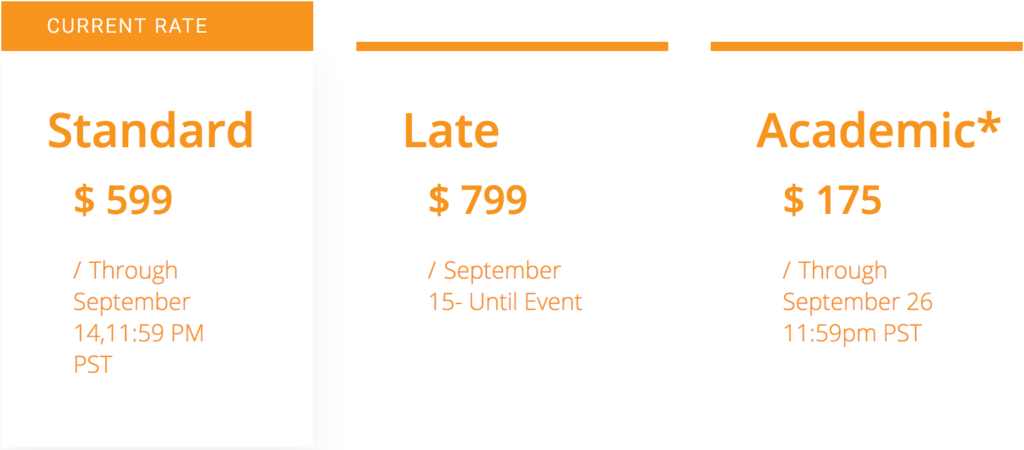We recently published the schedule for APIStrat 2018 in Nashville, TN, and now we’ve published the first batch of keynote speakers for the event. We are pretty excited regarding the interest we’ve had in speaking at APIStrat this round, and the lineup we’ve managed to secure the main stage. Making for a pretty compelling set of voices for the 9th edition of APIStrat.
As we roll into August, we wanted to showcase four distinct voices we are bringing to the main stage in Nashville for this round of API Strategy & Practice:
 Virginia Eubanks (@PopTechWorks)
Virginia Eubanks (@PopTechWorks)
Virginia Eubanks is an Associate Professor of Political Science at the University at Albany, SUNY. She is the author of Automating Inequality: How High-Tech Tools Profile, Police, and Punish the Poor; Digital Dead End: Fighting for Social Justice in the Information Age; and co-editor, with Alethia Jones, of Ain’t Gonna Let Nobody Turn Me Around: Forty Years of Movement Building with Barbara Smith. Her writing about technology and social justice has appeared in The American Prospect, The Nation, Harper’s and Wired. For two decades, Eubanks has worked in community technology and economic justice movements. Today, she is a founding member of the Our Data Bodies Project and a Fellow at New America. She lives in Troy, NY.
 Kate O’Neill (@kateo)
Kate O’Neill (@kateo)
Kate O’Neill, “tech humanist,” is founder and CEO of KO Insights, an award-winning thought leadership and advisory firm helping companies, organizations, and cities make future-aligned meaningful decisions based on human behavior and data. Author of 3 books including PIXELS AND PLACE: Connecting Human Experience Across Physical and Digital Spaces, Kate speaks regularly at industry conferences and private events, providing keynotes, participating in panel discussions, and leading creative brainstorming workshops for groups of all sizes.
 Jenn Schiffer (@jennschiffer)
Jenn Schiffer (@jennschiffer)
Jenn Schiffer is an engineer, artist and tech humorist. Most people know her for her incredible strength and also for being the Community Engineer of http://Glitch.com at Fog Creek. She organizes JerseyScript, a monthly web developer social in Jersey City where she’s based, and built everyone’s favorite free online pixel art editor, http://Make8BitArt.com .
Cristiano Betta (@cbetta)
Cristiano is a Developer Experience designer who helps companies small and large to improve their developer  onboarding, activation, and support. He likes to look at great developer onboarding flows, analysing and documenting the best practices and pitfalls of common design practices. Although he has over 15 years of development experience he believes that at the core we’re all beginners at some things, and documentation and onboarding should reflect that notion. In the past he’s worked as a contractor, startup founder, event organiser, and developer advocate at PayPal.
onboarding, activation, and support. He likes to look at great developer onboarding flows, analysing and documenting the best practices and pitfalls of common design practices. Although he has over 15 years of development experience he believes that at the core we’re all beginners at some things, and documentation and onboarding should reflect that notion. In the past he’s worked as a contractor, startup founder, event organiser, and developer advocate at PayPal.
We worked hard to continue bringing the leading API voices from across the space, but we felt it was also important to push forward the conversation on important issues that are relevant to the wider tech sector. We feel these four voices reflect the type of event we think the API sector needs in 2018, adding to the diverse set of personalities we’ve already brought together as part of the APIStrat session and workshop lineup.
Make sure you don’t miss out on the conversation this September 24th through 26th in Nashville, TN. Get registered for APIStrat 2018 today, and spend some time looking at the session and workshop lineup we have planned. We have more announcements coming so stay tune, and there are still opportunities to support APIStrat as a sponsor, so that you can help make sure the conversation that has been going on since 2013 continues.
We look forward to seeing you in Nashville September 24th through 26th!
 Join the OpenAPI Initiative and hundreds of API developers, strategist and thought leaders for APIStrat 2018 on Sept. 24-26 in Music City.
Join the OpenAPI Initiative and hundreds of API developers, strategist and thought leaders for APIStrat 2018 on Sept. 24-26 in Music City.
 Whether your business consumes or produces APIs, this conference is the best opportunity to interact with the companies and developers who are pushing the envelope in API implementation.
Whether your business consumes or produces APIs, this conference is the best opportunity to interact with the companies and developers who are pushing the envelope in API implementation.
 Join the OpenAPI Initiative and hundreds of API developers, strategist and thought leaders for
Join the OpenAPI Initiative and hundreds of API developers, strategist and thought leaders for  Cristiano is a Developer Experience designer who helps companies small and large to improve their developer onboarding, activation, and support. He likes to look at great developer onboarding flows, analysing and documenting the best practices and pitfalls of common design practices. Although he has over 15 years of development experience he believes that at the core we’re all beginners at some things, and documentation and onboarding should reflect that notion. In the past he’s worked as a contractor, startup founder, event organiser, and developer advocate at PayPal.
Cristiano is a Developer Experience designer who helps companies small and large to improve their developer onboarding, activation, and support. He likes to look at great developer onboarding flows, analysing and documenting the best practices and pitfalls of common design practices. Although he has over 15 years of development experience he believes that at the core we’re all beginners at some things, and documentation and onboarding should reflect that notion. In the past he’s worked as a contractor, startup founder, event organiser, and developer advocate at PayPal.
 Virginia Eubanks is an Associate Professor of Political Science at the University at Albany, SUNY. She is the author of Automating Inequality: How High-Tech Tools Profile, Police, and Punish the Poor; Digital Dead End: Fighting for Social Justice in the Information Age; and co-editor, with Alethia Jones, of Ain’t Gonna Let Nobody Turn Me Around: Forty Years of Movement Building with Barbara Smith. Her writing about technology and social justice has appeared in The American Prospect, The Nation, Harper’s and Wired. For two decades, Eubanks has worked in community technology and economic justice movements. Today, she is a founding member of the Our Data Bodies Project and a Fellow at New America. She lives in Troy, NY.
Virginia Eubanks is an Associate Professor of Political Science at the University at Albany, SUNY. She is the author of Automating Inequality: How High-Tech Tools Profile, Police, and Punish the Poor; Digital Dead End: Fighting for Social Justice in the Information Age; and co-editor, with Alethia Jones, of Ain’t Gonna Let Nobody Turn Me Around: Forty Years of Movement Building with Barbara Smith. Her writing about technology and social justice has appeared in The American Prospect, The Nation, Harper’s and Wired. For two decades, Eubanks has worked in community technology and economic justice movements. Today, she is a founding member of the Our Data Bodies Project and a Fellow at New America. She lives in Troy, NY. Kate O’Neill, “tech humanist,” is founder and CEO of KO Insights, an award-winning thought leadership and advisory firm helping companies, organizations, and cities make future-aligned meaningful decisions based on human behavior and data. Author of 3 books including PIXELS AND PLACE: Connecting Human Experience Across Physical and Digital Spaces, Kate speaks regularly at industry conferences and private events, providing keynotes, participating in panel discussions, and leading creative brainstorming workshops for groups of all sizes. Her expertise has been featured in CNN Money, TIME, Forbes, USA Today, Men’s Journal, the BBC, and other national and international media. Kate’s prior roles include creating the first content management role at Netflix, leading cutting-edge online optimization work at Magazines.com, developing Toshiba America’s first intranet, building the first departmental website at the University of Illinois at Chicago, and holding leadership positions in a variety of digital content and technology start-ups. She was also founder & CEO of [meta]marketer, a digital strategy and analytics agency. Kate is a vocal and visible advocate for women in technology, entrepreneurship, and leadership — she was featured by Google in the launch of their global campaign for women in entrepreneurship.
Kate O’Neill, “tech humanist,” is founder and CEO of KO Insights, an award-winning thought leadership and advisory firm helping companies, organizations, and cities make future-aligned meaningful decisions based on human behavior and data. Author of 3 books including PIXELS AND PLACE: Connecting Human Experience Across Physical and Digital Spaces, Kate speaks regularly at industry conferences and private events, providing keynotes, participating in panel discussions, and leading creative brainstorming workshops for groups of all sizes. Her expertise has been featured in CNN Money, TIME, Forbes, USA Today, Men’s Journal, the BBC, and other national and international media. Kate’s prior roles include creating the first content management role at Netflix, leading cutting-edge online optimization work at Magazines.com, developing Toshiba America’s first intranet, building the first departmental website at the University of Illinois at Chicago, and holding leadership positions in a variety of digital content and technology start-ups. She was also founder & CEO of [meta]marketer, a digital strategy and analytics agency. Kate is a vocal and visible advocate for women in technology, entrepreneurship, and leadership — she was featured by Google in the launch of their global campaign for women in entrepreneurship. Kate O’Neill (
Kate O’Neill ( Jenn Schiffer (
Jenn Schiffer ( onboarding, activation, and support. He likes to look at great developer onboarding flows, analysing and documenting the best practices and pitfalls of common design practices. Although he has over 15 years of development experience he believes that at the core we’re all beginners at some things, and documentation and onboarding should reflect that notion. In the past he’s worked as a contractor, startup founder, event organiser, and developer advocate at PayPal.
onboarding, activation, and support. He likes to look at great developer onboarding flows, analysing and documenting the best practices and pitfalls of common design practices. Although he has over 15 years of development experience he believes that at the core we’re all beginners at some things, and documentation and onboarding should reflect that notion. In the past he’s worked as a contractor, startup founder, event organiser, and developer advocate at PayPal.

 Assertible enables businesses of all shapes and sizes to confidently monitor the quality and stability of their APIs, allowing for faster iteration and development cycles without compromising correctness in the applications. Utilizing the
Assertible enables businesses of all shapes and sizes to confidently monitor the quality and stability of their APIs, allowing for faster iteration and development cycles without compromising correctness in the applications. Utilizing the